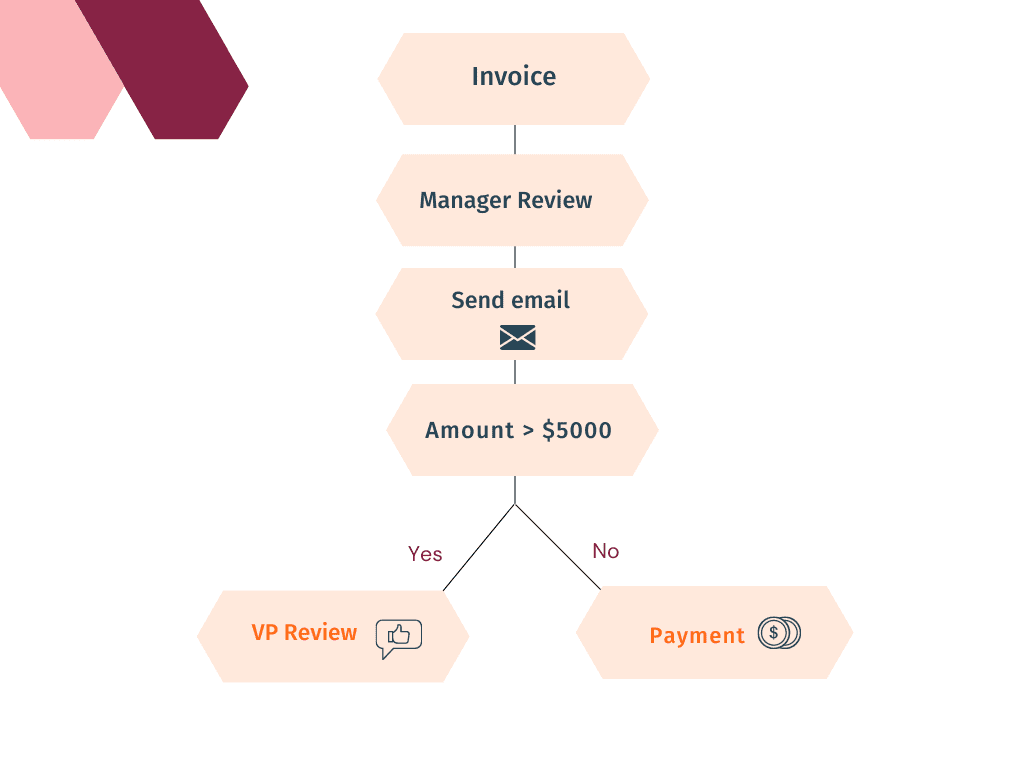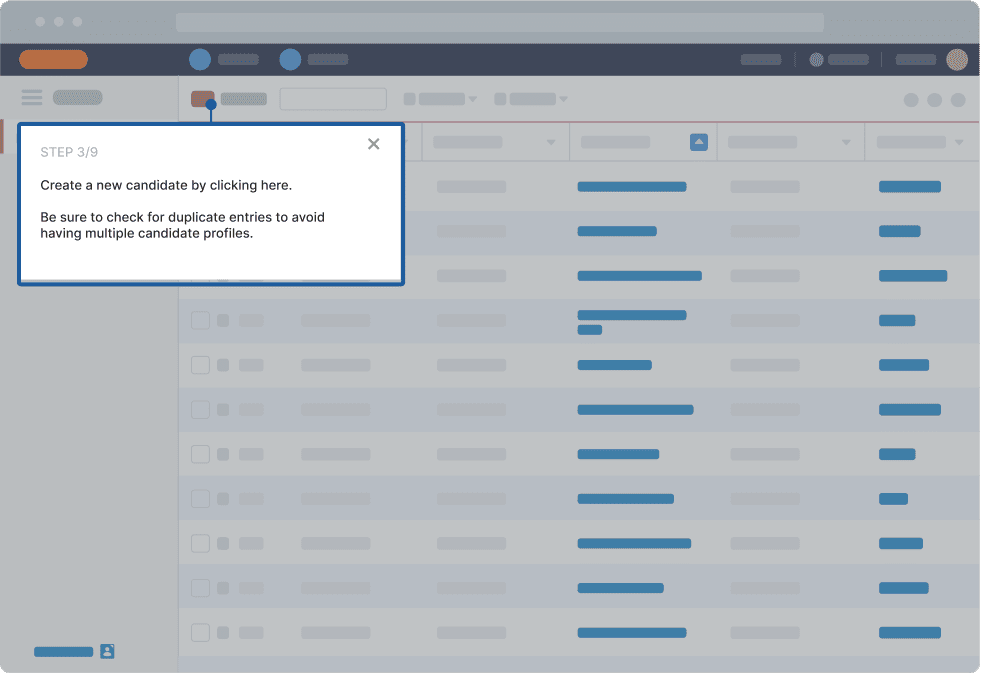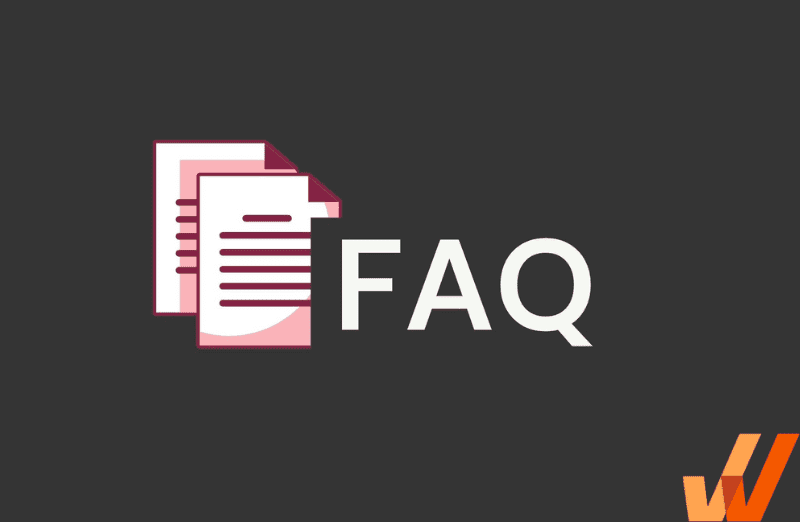An organization’s ability to create, distribute, and manage process documentation and step-by-step instructions for common workflows across the company is a significant indicator of enterprise success. This is where standard operating procedures (SOPs) come in.
SOPs are more than just operational roadmaps; they are strategic blueprints for navigating the business environment. They ensure that your employees always have the performance support and directions they need to work effectively.
As we continue to ride the digital transformation wave, SOPs have emerged as unsung heroes of business operations. They facilitate effective knowledge management, ensuring crucial how-to documentation is captured, updated, and accessible for everyday workflows and tasks.
They ease the transition towards digital adoption, providing consistent guidelines and guardrails as businesses implement new technologies. This enables organizations to achieve business outcomes from new digital processes.
This article explains the importance of SOPs and their benefits. It explores common types of SOPs and their format and elements. Plus, we’ll breakdown the steps of creating effective standard operating procedures for your employees.
What Is a Standard Operating Procedure?
Standard operating procedures (SOPs) are detailed guidelines that provide employees with step-by-step instructions on how to carry out essential business processes and routine tasks. SOPs enable employees to achieve higher levels of efficiency, quality output, and uniformity of performance. All while reducing miscommunication and failure to comply with industry regulations.
SOP documents serve as a playbook that outlines step-by-step instructions for completing a task. This minimizes miscommunication and ambiguity. Teams create different types of SOPs depending on the task at hand.
- HR teams may create an SOP for their employee onboarding process, recruiting process,
- Sales SOPs for sales call scripts and playbooks, lead qualification process, approval workflows, and contract negotiations.
- Customer support SOPs for ticket escalation procedures and handling customer complaints.
- Manufacturers may create an SOP for team members to manage machine maintenance, conduct quality control inspections, and manage inventory.
7 Benefits of SOPs
SOPs help eliminate disorganization from your business and improve the functioning of your day-to-day operations. Here are some of the major benefits of SOPs:
1. Save time and resources
Without specific standards and instructions for executing tasks, organizations spend excess time and resources trying something new each time. Plus, there is no guarantee that even after spending all that time learning how to complete a task you’ll even get the execution right.
With an SOP, the “figuring out” part is out of the equation, as rules and guidelines streamline workflows and ensure employees complete a process as per a set standard. This improves employee productivity, drives team efficiency, and allows organizations to become process-orientated companies.
2. Facilitate compliance
There are regulations that guide certain businesses in various industries to protect their customers and maintain safety and sanity in the field. Having SOPs in place ensures that industry compliance standards are followed and met properly. SOPs put measures in place so that employees comply with relevant laws, policies, and regulations, as well as avoid any litigation or risk.
3. Ensure consistency
When businesses generate a high-quality product, you want to maintain that quality in the future. Creating SOPs is like providing a blueprint for the production line which maintains quality, creates consistency, protects the integrity of your product, and ensures that your product or service is created in the same way from – start to finish.
4. Hold employees accountable
Accountability at work is in your company’s and workforce’s best interest. Fostering a culture of accountability boosts employee morale and productivity and gives employees the sense of ownership they need to thrive.
Having SOPs in place empowers managers to properly gauge employee performance based upon a predetermined set of guidelines provided by them, giving transparency on who is responsible if (or when) things go wrong. Without proper work standards, understanding and improving employee performance becomes much more difficult for leaders and people managers.
5. Better communication
It’s not always easy for employees to correctly interpret or understand directions given by managers on various – often complex – processes. Additionally, not all managers have the bandwidth to communicate with employees daily.
SOPs make life easier for both managers and their employees. Managers no longer need to provide detailed instructions on workflows to each employee individually, and employees no longer need to go back to their managers again and again when they have questions about any work-related processes.
Employees are empowered to become self-sufficient and reassess an SOP document whenever they need a refresher. This allows employees to have on-demand support in the flow of work, letting them continue with their tasks without wasting time.
6. Promotes knowledge-sharing culture
If your organization relies solely on employees remembering key details of your business processes by memory and not in a procedural manual, what happens when that employee decides to leave your organization?
With a proper knowledge management (KM) strategy, turnover can be disastrous. Creating handover documentation and SOPs allow you to preserve critical organizational information so that it doesn’t leave the organization when employee do – empowering companies to embody a culture of knowledge sharing.
7. Better onboarding and training
Employee training programs are a significant part of an organization’s growth and success. Organizations that design an effective employee training strategy are rewarded with a well-trained, productive workforce that contributes significantly to their company’s growth and goals.
Training-related SOPs help standardize the employee onboarding process and other training programs. They ensure that all new hires receive the same training on the same topics and responsibilities in the same amount of time. An example would be an SOP for new hires containing an employee onboarding checklist of must-complete tasks for all new team members.
These guidelines ensure that new employees settle in quickly and save time and money in the long term.
8 Types of SOPs
SOPs can be categorized into several types, depending on the nature and scope of the tasks they aim to standardize. Here are the main types of SOPs:
1. Procedure SOPs
These are the most common type of SOP, focusing on a specific operation or procedure within an organization. They detail the step-by-step instructions needed to complete a task. For example, an SOP procedure might outline the steps for processing a customer return. An SOP like this ensures consistency and minimizes errors in handling returns.
2. Process SOPs
These SOPs guide the execution of a process, often within manufacturing or laboratory environments. They cover a sequence of operations or events that progressively lead to an end result. A process SOP in a pharmaceutical company may detail the entire drug manufacturing process, ensuring that every batch of medication meets the same standards.
3. Technical/Equipment SOPs
Also known as quick reference guides, these SOPs provide instructions on operating equipment or machinery. They can include guidelines for routine maintenance, troubleshooting, and safety precautions. A technical SOP for an imaging device would cover image capture protocols and basic maintenance tasks. This knowledge can empower employees to operate equipment safely and effectively.
4. Administrative SOPs
These SOPs cover administrative procedures within an organization. They might deal with topics like financial operations, human resources processes, data handling, or compliance with regulations. An administrative SOP for employee onboarding would outline every steps from sending the offer letter to scheduling orientation sessions. This supports a smooth experience for new hires.
5. Safety SOPs
These SOPs are developed to ensure workplace safety, particularly in industries like construction, chemicals, and healthcare. They provide guidelines for handling hazardous materials, operating machinery safely, and responding to emergencies. A safety SOP in a chemical plant might cover ventilation protocols and response procedures in cases of exposure.
6. Quality assurance SOPs
These SOPs detail the steps needed to maintain quality control within an organization, ensuring that products or services consistently meet certain standards. In a food production facility, a quality assurance SOP could cover sampling and testing procedures for each batch of product. This would help maintain consistency.
7. Emergency SOPs
These SOPs provide guidance for responding to emergency situations. They’re used to ensure a coordinated, timely, and effective response during emergencies, such as fire, medical emergencies, or natural disasters. An emergency SOP for an office building would include detailed evacuation routes. Regular drills based on these SOPs inform employees about what to do if real problems arise.
8. Training SOPs
These SOPs are designed to guide training processes, ensuring that employees receive consistent and comprehensive instruction in their roles and responsibilities. A training SOP for a call center might include company policies and customer service best practices, and software usage. This helps organizations scale high-quality instruction.
Key Elements of an SOP
Here are some common structural elements found in standard operating procedures (SOP):
- Title page: The title page of your SOP contains identifying information about the document, including a unique identification number, date of creation, department/employees/team the SOP applies to, and the name and signatures of the parties involved in creating the SOP.
- Table of contents: Acts as a guide for the reader to quickly jump to any relevant section(s). They are particularly helpful for longer processes with an SOP document that is longer than a few pages.
- Purpose: Explain the goals and objectives for creating the SOP and how it will benefit the user and the organization.
- Scope: Describes the limits of the document and helps the reader understand its boundaries.
- Roles and responsibilities: Identify key stakeholders (employees, managers) to be involved in a given process, and define their roles and responsibilities in the SOP’s creation.
- Procedures: This section describes the step-by-step explanations to be followed while completing a task and any additional information needed to complete the tasks.
- Resources and materials: Define the tools, technology, resources, and other necessary information required for completing the procedure.
- Health and safety warnings: Describe all safety precautions for employees to take care of.
- Revision history: Add a revision history to ensure readers that the SOP is up-to-date.
6 Common SOP Formats
Here are a few examples of common types of SOP documents:
1. Step-by-step tutorials
As the name suggests, step-by-step instructions describe a particular procedure in relevant, easy-to-follow steps that empower employees to finish a specific task efficiently. These SOPs are best suited for simple tasks. They often include numbered lists with clear instructions for each step. Screenshots or diagrams can be incorporated to enhance understanding.
2. Checklists
Google Docs, Microsoft Word, or an online note-taking app such as Evernote or Notion can be printed for employees to mark as they complete steps. To create a checklist, you make a main header for the process for which you are creating the checklist and add relevant checklist items that employees need to follow to complete the task.
Checklists are particularly effective for processes that require consistent repetition and verification. Think safety inspections or quality control checks. You can create digital versions of checklists to make them easy to access at all times.
3. Hierarchical lists
If your procedures are complex and need detailed information, create hierarchical checklists to avoid explaining a simple process in a lengthy way. It is a great way to simplify all the business processes into one, centralized document.
Hierarchical lists use a tiered structure to organize information. This format works best for processes with multiple layers of detail or decision points. It allows users to quickly understand the structure while having access to more information when necessary.
4. Flowcharts
Flowcharts visually represent how a process works. They present better context for easier workflow understanding and show how one step is closely related to another, helping employees conceptualize an entire concept and clearly understand an overall process.
Flowcharts are useful for processes with multiple decision points or possible outcomes. Modern digital flowcharts can be interactive. For example, they can allow users to click through different paths for a more engaging learning experience.

5. Video
Video SOPs demonstrate procedures in real-time. They can be particularly effective for tasks that require demonstration. Video SOPs can include voiceover explanations, on-screen text, and interactive elements. They’re especially useful for remote teams or processes that are difficult to describe.
6. Interactive in-app guidance
This modern approach to SOPs integrates guidance directly into the software or tools employees use daily. It provides real-time, contextual instructions. For example, when using a new CRM system, tooltips might guide users through entering customer information or generating reports.
With Whatfix’s digital adoption platform (DAP), enable your technology end-users with contextual in-app guidance and moment-of-need support. Field validation also ensures data is entered correctly, and in the right format.

SOP Use Cases by Role and Sector
All sectors can benefit from having SOPs. Here’s a look at how this works in practices across different industries and roles.
SOP Use Cases by Industry
- Manufacturing: SOPs contribute to consistency and quality. For example, quality control procedures ensure that every product meets requirements. Equipment operation guidelines provide clear instructions that reduce errors and boost efficiency. Safety protocols for factory floors help prevent accidents.
- Education: Educational institutions can streamline operations and maintain standards with SOPs. Admissions SOPs support fair and consistent evaluation of applicants. Curriculum development guidelines may improve the quality of education. SOPs can also guide staff on how to interact with students.
- Call centers: Call centers use SOPs to maintain service quality. Customer interaction scripts provide a framework for communication. Escalation procedures guide agents on how to handle issues or dissatisfied customers.
- Insurance: The insurance industry can have all kinds of SOPs. Claims processing workflows increase efficiency. Policy underwriting guidelines help with risk assessment. Compliance-checking procedures keep operations in line with industry regulations and company policies.
- Government: Government agencies use SOPs to improve public service. Permit application processes support the fair treatment of all applicants. Record-keeping and data management procedures keep sensitive data safe.
- Hospitality: In hospitality, SOPs are key to delivering consistent customer experiences. For example, guest check-in and check-out procedures make for smooth transitions. Housekeeping standards ensure cleanliness and comfort across all rooms.
- Airline Industry: Airlines rely on SOPs to set safety and service standards. Pre-flight check procedures help every flight meets safety requirements. In-flight service standards can also improve the customer experience.
- Military: The military uses SOPs to maintain order and effectiveness in high-stakes situations. For example, maintenance guidelines keep equipment in top condition. Communication protocols influence the way personnel exchange information.
SOP Use Cases by Department and Role
- Human resources: HR departments use SOPs to support fair and consistent treatment. Recruitment and hiring SOPs help to reduce bias in the process. Employee onboarding procedures provide new hires with consistent information and experiences.
- Customer service: Customer service teams rely on SOPs to make every interaction count. Complaint-handling procedures can take the stress out of handling issues. Customer satisfaction protocols help team members gather helpful feedback.
- Marketing: Marketing departments use SOPs to streamline their efforts and campaigns. For example, social media posting guidelines power a consistent brand voice across platforms, and campaign launch checklists get everyone on the same page before a go-live date.
- Sales: Sales teams use SOPs to standardize their approach and improve performance. Lead qualification processes make it easier to focus on the most promising prospects. Contract negotiation procedures ensure that all deals are structured with best practices in mind.
- Finance: Finance SOPs can boost accuracy and compliance. For example, budget approval procedures ensure that spending aligns with organizational goals. Financial reporting guidelines keep statements accurate.
How to Write an Effective SOP
Follow these seven steps and you’ll be on your way to creating helpful SOPs for your workforce.
1. Choose a format
You can choose from a variety of formats when it comes to presenting your SOP. The format will vary depending on the job roles, tasks, length, and details of your SOP.
For instance, a simple checklist list may be sufficient if there’s no need to include an additional explanation or potential contingencies. If each step in the process can potentially lead to multiple outcomes, you may want a flowchart.
2. Identify your audience
It’s important for you to know who will actually be engaging in the procedures to make the SOP document as contextual and useful as possible. Simply put, your audience will guide the level of detail needed in your SOP.
To know more about your audience, ask yourself the following questions:
- Are they new employees?
- What’s the size of the audience?
- What prior knowledge do they have?
- Does an SOP already exist for them?
- The more information you have on the audience, the more you’ll understand their point of view. This will help you create an SOP that is relevant to them.
The more information you have on the audience, the more you’ll understand their point of view. Create user personas representing different segments of your audience. Refer to these personas throughout the SOP creation process to meet all user needs.
3. Collaborate with employees and ask for input
You need to collaborate with all personnel who will be engaging in, or impacted by, your SOP. This allows you to get an idea of best practices Generally, your SOP development team should consist of:
- C-level executives – for developing lean operations to achieve high-level business goals
- Management leaders – for developing best practices, defining necessary use of resources, and determining a plan for implementing SOP
- Ground-level employees – for determining the validity and plausibility of the SOP in terms of logistics and resource consumption
- Creator of your SOP – specializing in technical writing skills and having in-depth knowledge of your company’s processes
4. Write the initial draft
Once you have spoken to your employees who will be involved in creating the SOP and have chosen the best format to use, you can begin planning out the SOP document draft. Provide whatever information you feel will be helpful to the user while making sure that it is relevant to the document.
Here are a few best practices for you to keep in mind while writing your SOP:
- Include annotations, illustrations, flow charts, and images to make your document more interactive.
- Ensure the sentences are brief, simple, and written in common terms.
- Ensure that the steps are written using simple action-oriented verbs.
- Use neatly written short sentences, bulleted items, or lists.
- Don’t make readers sift through paragraphs of text to find what they need in the SOPs.
- Use headers to break up your text.
- Link to any additional resources or help guides in your Sharepoint, Google Drive, or internal knowledge base.
5. Review, test, and edit
Once you have created the document, it’s time to review it with your stakeholders and management to gather feedback and input. Additionally, to see how the SOP works in practice, ask some of your employees to test it out and identify any gaps or errors in the process.
Use a version control system to track changes to your SOP over time. This allows you to revert to previous versions if needed. It also makes it easier to audit processes and additions.
6. Distribute the SOP
After you are done creating the SOPs, you’ve come to the most essential part of the process -distribution. It’s crucial to find a place to store all your standard operating procedures (SOP) and other training materials for employees to easily access.
Ohe of the most effective way to distribute an SOP is through a mobile workplace apps that give every employee access to the document on their mobile devices. Many organizations also rely on knowledge bases and internal wikis to store help guides, training manuals, and SOPs.
7. Regularly maintain your SOPs to keep them updated
Now that the SOP is created and distributed, it’s time to set up a plan for the future. Without a periodic review and update session, your SOPs can quickly become out-of-date. Assign “SOP owners” within each department responsible for overseeing the regular review and updating of SOPs relevant to their area.
SOP Challenges
SOPs offer benefits. But maintaining them also comes with a set of challenges. Here’s what you should be aware of:
- Resistance to change: Employees may resist adopting new SOPs and prefer old methods.
- Keeping SOPs up-to-date: As processes evolve, SOPs can quickly become outdated.
- Balance: SOPs must be useful, but not so complex that they’re difficult to follow.
- Ensuring accessibility: SOPs need to be accessible to all relevant employees.
- Measuring effectiveness: It can be challenging to quantify the impact of SOPs.
- Consistency: Maintaining SOP standards across departments or locations can be difficult.
- Time and resource investment: Creating and maintaining SOPs requires time and effort.
- Encouraging use: Ensuring that employees refer to and follow SOPs can be challenging.
- Learning styles: Employees learn in different ways, it’s tough to create SOPs for everyone.
- Integration: Incorporating SOPs into daily work can be difficult.
SOP Template
Download our SOP template to help you kickstart your standard operating procedures creation process:
Business Software and Processes Clicks Better With Whatfix
Accelerate onboarding by enabling your employees with contextual in-app guidance and constant real-time support via the Whatfix Digital Adoption Platform (DAP).
Whatfix provides application owners and IT teams with a comprehensive no-code platform to enable users, improve onboarding, and drive adoption. This will help you achieve business outcomes and create frictionless digital experiences.
With Whatfix:
- Enable end-users to have contextual, role-based in-app onboarding and training with Whatfix in-app guidance and experiences like Tours, Flows, and Task Lists.
- Provide on-demand self-help support for end-users with Whatfix Self Help and identify common troubleshooting issues with Guidance Analytics.
- Build sandbox environments for simulated hands-on training with Whatfix Mirror.
- Collect feedback with Whatfix Surveys
- Analyze end-user behavior to identify areas of digital friction and map optimal workflows with Whatfix Analytics.

With the power of Whatfix, businesses can ensure that their SOPs are more than just documents—they become living, evolving guides that foster a culture of continuous learning and improvement. In doing so, businesses not only increase their operational efficiency but also drive effective knowledge management.
Ready to learn more about Whatfix? Click here to schedule a demo with us today!













